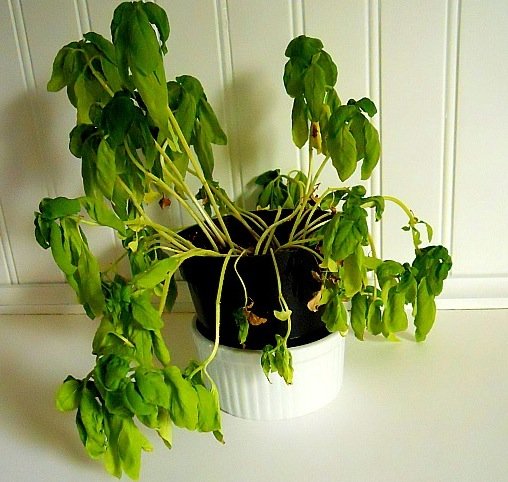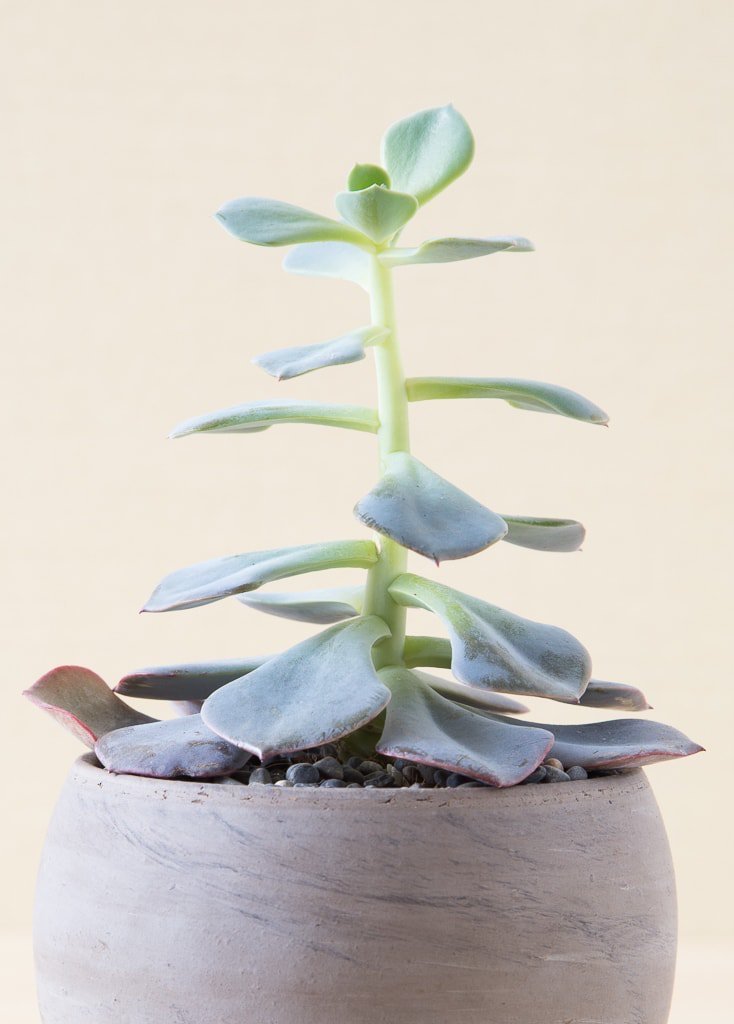5 Winter Plant Problems (and How To Prevent Them)
This plant is suffering from too much water. How can you tell?
Plant first aid is daunting for all plant parents because, well plants don’t us language like we do. That makes it tough to read them for signs of distress. Never fear, dear readers, this article will help you decipher what your ailing plants might be telling you.
A few things to note before we get started. The most important and easiest way you can treat your plants right is to pick plants that will thrive in your home. Check out our Plants by Room series for some pointers.
Second, don’t be stressed by sudden leaf fall in the winter. This is normal for most houseplants as they acclimate to colder temperatures. A period of shock (falling leaves) is expected.
This plant is suffering from dry air. How can you tell? Photo credit: Laid Back Gardener
Dry Air
Dry air for plants means little humidity which in turn makes it hard for the plant to transpire (something plants do, it is like sweating for humans. Most houseplants need humidity of 50% or above to thrive in a home. When we turn on our heat, reaching that ideal 50% can be tough.
Note: Succulents and cacti do not need much humidity and can survive a winter without any special attention in this area.
What It Looks Like
Leaves dry out, curl and fall, have crunchy texture
Brown tips or edges on leaves
Wilting leaves
How to Deal With it
Boost the humidity near the plant
Use a humidity tray, or mist your plant in the mornings
Use a humidifier
Do not water to combat dry air. The roots are not as susceptible and do not need extra moisture.
Read our article on humidity
How To Prevent It
Measure your humidity with a hygrometer.
Keeping plant problems at bay with good housekeeping is crucial. Learn how here.
This drawing illustrates the difference in overwating and under watering. Photo credit: The Plant Guide
Overwatering
Overwatering is the most common cause of houseplant death. It’s important to remember that your plants are not actively growing in the winter so they need significantly less water. Your watering schedule should reflect that.
What It Looks Like
Soft to the touch brown spots and patches on leaves
Leaves curl and fall, limp not crunchy
Rotting leaves and stem (black, squishy, wet, possible foul odor)
Green slime (not white) on clay pots
How to Deal With it
Stop all watering
Decompact the soil with a straw or fork
Provide some drainage
Ventilate the plant with a small fan
How To Prevent It
Know where you plant is from and what soil it needs. Try to match it that best you can.
Keeping plant problems at bay with good housekeeping is crucial. Learn how here.
This plant is suffering from cold air. How can you tell? Photo credit: Laid Back Gardener
Cold Temperatures
Nobody likes cold weather, especially plants. Really, what is there to like? Cold temps can affect plants drastically. Here’ how to deal with it.
What It Looks Like
Leaves curl and fall
Leaves yellow and fall
How to Deal With it
Move plant to a warm place, not near a window or door, away from draft
How To Prevent It
Keep your space warm, preferrably between 69 and 75 degrees F
Avoid keeping plants on windowsills
Avoid keeping plants in spaces near outside doors
Keeping plant problems at bay with good housekeeping is crucial. Learn how here.
This succulent is not getting enough light and has become “leggy”, i.e. it has grown the stem with underdeveloped leaves. Photo credit: Succulents and Sunshine
Not enough light
Light, whether it comes from the sun or grow light, provides warmth and energy for plants to survive. Energy from light is used by plants to make their own food energy.
This ability is known by a common name: photosynthesis. Photosynthesis is a chemical reaction where absorbed energy from light is used to convert carbon dioxide (from the air, thanks humans!) and water (from the soil, thanks roots!) into a sugar called glucose, which is sent back to the roots of the plant and absorbed as food. So yeah, light’s important.
What It Looks Like
Plant growing slowly or not at all (over time)
Variegated leaves turn all green
Small, pale leaves; spindly growth (leggy)
Pale, weak growth
How to Deal With it
Move the plant gradually to more light
How To Prevent It
Keep the plant in conditions it needs for light
Keeping plant problems at bay with good housekeeping is crucial. Learn how here.
This is an example of succulent with a mealybug infestation. Photo credit: Sunshine and Succulents
Pest and Disease
Fortunately, plant pests and other diseases are usually easy to spot. You’ll see them around the stems and leaf nodes or in the soil. They like to feed off the plant nutrients where they are the juiciest, for example, where the stem joins a new leaf, when a stem joins the trunk and in the soil with the plant’s roots.
A serious attack of most pests leads to wilting, yellowing and leaf fall. Keep reading to learn more.
What It Looks Like
Leaves are dull and lifeless
Holes and tears in leaves
White cottony fluff on stems or underside of leaves
White webbing between leaves and stems
Soft to the touch brown spots and patches on leaves moist and blister like or dry and sunken
How to Deal With it
Clean affected plants
Treat affected plants
How To Prevent It
Make sure you have the right air flow and temperature
Practice good housekeeping
Water with hydrogen peroxide
Quarantine infested plants immediately
Learn more about plant pest and disease here.




